C-c
Food chain: also called trophic, It is an abstract representation of the passage of energy and nutrients through a community populations. Ensures the passage of transfers or food substances (trophic) among living beings.
Cadmium. chemical element of group VIII of the periodic table. Atomic number 48 and atomic mass 112.41. Has industrial applications, for example in metallurgy. It is one of the heavy metals, capable of accumulating in organisms and in humans through trophic chains, and very toxic. Cd symbol.
Cal. Quicklime is calcium oxide, High. It is a white solid very greedy for water and caustic. The reaction of quicklime with water produces the release of heat and the formation of calcium hydroxide, That(OH)2 which off.
Fishing ground. Maritime area subject to fishing activities due to its abundance in one or more exploitable species. There are offshore fishing grounds and coastal fishing grounds, the latter more important in areas of wide coastal shelf.
Limestone. That material or organism that in its structure contains a high percentage of calcium carbonate; for example, sponges (Porifera thread), some types of soils, corals (filo Coelenterata), calcareous algae, etc..
Calcicola. Organisms (animals and plants) that have an affinity for calcium soils.
Football. chemical element of the group II of the periodic table or alkaline earth. Atomic number 20, atomic mass 40.08. White metal, very alterable to air and water, There is no free in nature. Combined, it is found in great abundance as a cation of sulfuric and carbonic acids mainly. As calcium carbonate it is found among other rocks in limestone and marble. As calcium sulfate in anhydrite and gypsum. Ca symbol.
Global warming: It is the alteration (increase) of the planet's temperature, product of intense human activity in recent years 100 years old. The increase in temperature can modify the composition of the thermal floors, alter rainy seasons and increase sea level.
Limestone. Sedimentary rock whose main component is calcite (calcium carbonate, CaCO3). Its origin may be the chemical or biochemical precipitation of calcium carbonate in sedimentary media., construction by organisms (coralline limestones) and the cementation of limestone shells of molluscs (lumaquelas). Limestone reliefs are frequent in young mountain ranges (for example the alps), giving rise to characteristic reliefs. Among the erosive forms of limestone are karst formations.
Hot. Energy in transit from a hot to a cold source. Some of the energy can be used to do useful work, but not all, the rest has to yield to the cold focus. Therefore, heat transfer implies a loss in the ability to produce work. Heat is measured in energy units, usually in calories, whose mechanical equivalent is 0.24 joules.
Calorie. Thermal unit of measure equivalent to the heat required to raise from 14.5 a 15.5 degrees Celsius the temperature of a gram of water, at normal atmospheric pressure.
Climate change. Subject of interest to scientists and experts that in recent years has jumped into the media and has become an object of interest and social concern, especially due to its link to polluting emissions into the atmosphere. Human interventions in the atmosphere that act in favor of global warming are fundamentally the production of CO2 and other greenhouse gases, steadily increasing since the industrial revolution. However, the increase in airborne particles, also product of industrial processes, intercepts solar radiation and therefore tends to produce cooling. If to this we add that the temperature records are relatively recent and that the knowledge of the regulation mechanisms in the atmosphere and its interaction with the oceans is still insufficient, it has to be concluded that at present it cannot be ascertained whether the climate is actually changing significantly. The importance of real climate change can hardly be underestimated, since a warming of a few degrees in the annual average temperatures would produce increases of a few meters in sea level and changes in the distribution of the cultivation areas.
Tourist camps. Duly delimited land spaces, gifted and conditioned, intended to facilitate people, regularly and by price, a place to live outdoors for a limited time for holiday or tourist purposes and using, as residence, mobile shelters, tents, caravans, or other similar elements easily transportable.
Canchal. Site of superficial accumulation of rocky fragments frequent in areas of glacial deposit.
Ozone layer. Located in the upper layers of the atmosphere, Come in 10 and 50 kilometers high, records the highest concentrations of ozone (triatomic oxygen molecule, O3). Ozone absorbs most of the ultraviolet radiation of solar origin, preventing it from reaching the Earth's surface. Since this radiation is mutagenic, the discovery in the eighties of a «hole» in the ozone layer over Antarctica caused enough alarm to propose limitations in the production of substances for industrial use such as CFCs (chlorofluorocarbons), known to be capable of destroying ozone.
Fishing catch. Amount of catch obtained. It is measured by the landed catches and is generally expressed in tm.
Activated carbon. High purity charcoal with an extraordinarily porous texture, so the surface / volume ratio is very high. It is used as a filter element due to its adsorption capacity
Coal. Sedimentary rock of organic origin, formed in hot and humid times from plant remains buried in a sedimentary basin and undergoing anaerobic fermentation with carbon enrichment. The main types of coal, from youngest to oldest geological age, carbon content and calorific value are peat, lignite, coal and anthracite. The extraction of coal from its deposits is the object of a type of mining, coal mining, that supplies this fossil fuel as a raw material to thermal power plants.
Total organic carbon. Amount of carbon contained in wastewater determined by catalytic oxidation of the carbon compounds present.
Organic carbon. Combined carbon in organic compounds. In clean natural waters, the determination of organic carbon is a measure of biomass.
Carcinogenic. Agent that has been experimentally proven to induce or cause cancer in humans or animals. Carcinogens can be physical (certain types of radiation) or chemicals, among which there are numerous substances.
Biodegradable organic load. Amount of organic matter contained in wastewater that can be degraded by biological action.
Carophytes. Very old group of multicellular algae, fresh or brackish water. There is a vertical axis with internodes and nodes around which whorled ramifications are observed.. Their membranes are usually calcified. They are an important group within the epicontinental waters.
Earth Charter: Statement of Fundamental Ethical Principles and Practical Guide of Enduring Meaning, widely shared by all peoples. Similar to the United Nations Universal Declaration, the Charter is used as a universal code of conduct to guide nations towards sustainable development. It is a call to action that adds new and significant dimensions to what has been expressed in previous agreements and declarations on environment and development..
Catalysts. A catalyst is a substance that increases the speed of a chemical reaction without being wasted in the process, so that, in ideal conditions, in the end it recovers unaltered. Inorganic catalysts, like the platinum sponge, they act due to their great adsorption capacity. They can easily lose their effectiveness in the presence of certain substances that poison the catalyst.
Channel. Channel through which the water of a stream circulates. In the course of a river you can see the bottom and the walls. On the avenues, water can overflow the channel and occupy the flood bed.
Rubber. Organic polymer originally obtained from the latex of tropical trees of the genus Hevea (rubber tree). Synthetic rubber is obtained by polymerization of hydrocarbons.
Caudal. Volume of water that passes per unit of time through a given section of a water course or conduit; it is also said of the water course, without reference to section.
Ash. Small particulate material that results from combustion processes or is a volcanic product formed by the smallest pyroclasts.
Thermal power plant. Electric energy production center from conventional fuels such as coal or petroleum derivatives or nuclear fuel. In the latter case, they are called nuclear power plants..
I search. Fishing gear used to catch pelagic species. The net is set vertically surrounding the school of fish. When the fence is complete, the bottom line is charged closing the net in the form of a bag. The gear is hoisted and the fish are trapped in the central part.
Cereals. Grasses cultivated like wheat in various varieties, rye, barley, the oats, the corn, rice and sorghum.
Falconry. Hunting with trained birds of prey. It is an ancient activity, once restricted to royalty and nobility, and currently undergoing specific regulation since the species used (falconry birds) are protected by law (hawks, azor, hawk and kestrels).
cyanide. Hydrogen cyanide salts. Both acid and alkali and alkaline earth metal salts are highly toxic (for example, potassium cyanide, Industrial Park). Cyanide toxicity is due to the fact that it kills cells by inhibiting enzymes of the respiratory chain, the main energy-producing metabolic pathway that occurs in cellular organelles called mitochondria. Cyanides have applications in the chemical industry, mining, steel industry and as pesticides.
Hydrological cycle: It is a continuous movement through which water evaporates from the ocean and other bodies of water, condenses and falls as precipitation on the earth; later, the latter can rise to the atmosphere by evaporation or perspiration, or return to the ocean through surface or groundwater.
Cyprinids. Fish family (Cyprinidae) fresh water. They lack oral teeth and crush food with pharyngeal bones, generally useful in determining species. They feed on small aquatic prey (insects, worms, larvae) and plant material. They are undemanding fish regarding water quality, are interested in sport fishing and local consumption and form a significant proportion of the number of species of the Iberian fauna of freshwater fish. Carp and carp are cyprinids, barbos, tench and river bogas.
Citrus. Fruit trees of the Rutaceae family. They are cultivated plants and among them are the lemon tree, orange and grapefruit.
Mediterranean climate. Climate typical of the Mediterranean region, but it is also found in reduced areas in other parts of the world and that corresponds to the climate of a good part of the Iberian Peninsula. It is characterized by a marked seasonality, with maximum summer temperatures and rainfall distributed in autumn-winter and spring and with a water deficit (drought) summer of variable duration. There are continental variants, oceanic and mountain, semi-arid and arid with transition to sub-desert conditions.
Weather. Average state of atmospheric conditions in a region. The main elements of climate are temperature, rainfall, humidity and insolation, inter alia, whose seasonal variation is essential for the classification of climates.
Chlorination of water. Adding chlorine to water, in elemental form or in the form of compounds such as hypochlorites. Due to its intense oxidizing action and high toxicity, the addition of chlorine is used primarily to kill germs (water disinfection).
Total residual chlorine. It is the concentration of chlorine, both free and combined, which is measured after a specified period of time in water subjected to chlorination.
Chlorine. Chemical Element of Group VII of the Periodic Table. Atomic number 17, atomic mass 35.453. Melting point -100.98ºC and boiling -34.6ºC. It is a greenish yellow gas, irritating and poisonous, that does not exist free in nature, although some of its compounds, like chlorides, they are very abundant. It has a multitude of applications, among which the chlorination of drinking water stands out, use as a bleach and the manufacture of organic chemicals. Symbol Cl.
Chlorofluorocarbons. Volatile hydrocarbon derivatives containing chlorine and fluorine, and that have various industrial uses (refrigeration, propellants in nebulizers). The emission of CFCs into the atmosphere causes damage to the ozone layer, since CFCs are decomposed by solar ultraviolet radiation and produce free chlorine that destroys ozone. Concern for this environmental problem has led to international agreements that limit the production of CFCs and tend to decrease them..
Chloroform. Trichloromethane. Volatile organic compound with anesthetic properties (it was the first anesthetic discovered) and organic solvent (used to dissolve and extract organic compounds). Formula CHCl3
Chlorides. Cl ion- and its salts (sodium chlorides, potassium, etc.) or salts of hydrochloric acid HCl, which in gaseous anhydrous form is considered a chloride, hydrogen chloride.
Copper. chemical element of group VIII of the periodic table. Atomic number 29, atomic mass 63.54. It is a dense metal of red color, soft, ductile and malleable and very good conductor of electricity. It is found in nature in elemental form (native copper) and in minerals such as chalcopyrite and cuprite. It has industrial applications in alloys, electric conductors, pipelines, etc. Due to its toxic action on microorganisms, copper salts such as sulfate, CuSO4, they are used as algaecides. Cu symbol.
Cogeneration. Joint production in the same usable electrical and thermal power plant.
Coliforms. Group of aerobic and facultatively anaerobic bacteria, Gram-negative, non-sporulating, lactose fermenters and typical inhabitants of the human and animal large intestine. Many of them are not able to reproduce outside the intestine, therefore they serve as indicators of contamination by sewage. Some coliform organisms are pathogens.
Fossil fuels. Coal, oil and natural gas. They are materials of organic origin, produced from the remains of living things in earlier geological times. They make up the bulk of the energy sources consumed in industrial countries. They are non-renewable resources and their use is the main responsible for polluting emissions into the atmosphere..
Composting. Transformation of garbage into compost. For this, the organic fraction of solid waste is subjected to a controlled microbial fermentation to obtain an artificial humus or compost usable as agricultural fertilizer..
Inorganic compounds. Chemical compounds or combinations of the elements of the periodic table except carbon compounds.
Organic compounds. Chemical compounds or combinations of carbon with the other elements of the periodic table, except carbon dioxide (CO2), carbonic acid (H2CO3), bicarbonates (HCO3-) and carbonates (CO32-), which are considered inorganic.
Organophosphate compounds. Organic compounds that include phosphorus in their molecule. They are toxic substances with applications as pesticides.
Organohalogen compounds. Organic chemicals that contain one or more atoms of a halogen element such as chlorine in their molecule. Among them are pesticidal substances such as DDT (dichloro diphenyltrichloroethane), with toxicity to humans and the ability to circulate through food webs and accumulate in organisms.
Suffering communities. Vegetation formed by plants that have woody stems at the base, and herbaceous top, whose hypogeal structures do not die in winter.
Living communities. The community or biocenosis is the living part of the ecosystem. It is formed by the set of living beings that live in or on the inert substrate of the ecosystem or biotope. For methodological reasons, inter, plant or animal communities and numerous other subdivisions of a taxonomic nature are distinguished (fish community, of mammals, etc.) or other type (benthic communities, edaphic, etc.).
Outbreak of fire. Incident in which the fire control devices have intervened and which has led to the burning of an area of less than 1 hectare.
Concentration. Solute content in a solution. There are different expressions of concentration, as percentage by weight (grams of solute in 100 grams of solution); percent by volume (milliliters of solute in 100 milliliters of solution); grams per liter (g of solute in 1 liter of solution); grams per kilogram (g of solute in 1 kg of solution); molarity (moles of solute in 1 liter of solution); molalidad (moles of solute in 1 kg of solvent); normal (chemical equivalents of solute in 1 liter of solution); ppm (parts of solute in 106 dissolving parts).
Electric conductivity. Inverse of specific resistivity. It is measured in ohm-1 m-1 or Siemens / m. Conductivity depends on the migration of electrical charges (electrons or ions). Pure water is not a good conductor, but water with dissolved ionic substances is, so the measurement of the conductivity of the water is used to measure the salinity.
Conifers. Order of plants that produce cones, which includes almost all current Gymnosperms. Most of it is tall trees, perennials and acicular leaves. They are characteristic of temperate regions and form the main forests of cold zones. Produce wood, resins, dyes and turpentine.
Contamination: (From Latin contaminare = stain). It is a detrimental change in chemical characteristics, physical and biological of an environment or surroundings. Affects or may affect the life of organisms and especially human life.
Atmospheric pollution. It is usually defined as the presence in the air of materials or forms of energy that imply risk, serious harm or nuisance to people, fauna, flora or goods of any nature.
Noise pollution: Also called noise pollution. More intangible but no less important in an environmental analysis, is the measurement in noise pollution. It occurs more than anything in the urban space.
Radioactive contamination: It is the pollution produced by nuclear energy waste and caused by thermonuclear power plants that release toxic elements., which accumulate in the air, in the water or on the ground. Radioactive elements include strontium, the iodine, uranium, the radio, cesium, plutonium and cobalt.
Visual contamination: It is that pollution produced on the landscape and public space of urban centers.
Biological pest control. Techniques to reduce or eliminate undesirable animal or plant species, by natural methods such as intervention in any of the phases of the biological cycle (for example massive release of sterile males of an insect species) or the control of populations by means of predators.
Supply water control. Supply water analysis, according to the technical-sanitary regulations for the supply and control of the quality of drinking water for public consumption.
Land geographic coordinates. Pair of angular values that are assigned to each point on the earth's surface to determine its position and that are called latitude and longitude.
Petroleum coke. Fuel obtained from petroleum refining residues by pyrolysis.
Cork. Suber or suberous tissue produced by the stems of plants with secondary growth in their outer layer, formed by the suberified cell walls of dead and air-filled cells. The cork oak, Quercus suber, produces thick layers of cork that has various applications. The uncorking of the cork oaks to exploit the cork is carried out every eight or nine years.
Chorology. Study of the geographic areas of distribution of living beings.
Tidal currents. In the low littoral areas, of wide intertidal zone, tidal effects are important. Cyclically, a high tidal stream brings water and fine sediment. Backflow of water, generally with less transport capacity, corresponds to the low tidal current.
Firewall. In mountains, forest stands and cultivated areas, elongated areas devoid of vegetation, by way of trails, intended to cut the advance of possible fires.
Hunting. Continuous area of land susceptible to hunting use that has been declared and recognized as such, by resolution of the competent Administration.
Fishing preserve. In continental waters, non-flowing streams or waters, subject to a special regime with regard to fishing activities.
Crasifolio. Succulent leaf plant, this is, thickened and accumulating water. Crassifolia plants are adapted to arid conditions.
Vegetative growth. Difference between birth and death rates.
Cryoturbed. Soils subjected to cryoturbation, It is a phenomenon that occurs in high latitudes and periglacial areas where the soil is subjected to a certain depth to the seasonal sequence of freezing and thawing that produces displacement of particles modifying their distribution in the soil layers.
Chrome. chemical element of group VIII of the periodic table. Atomic number 24, atomic mass 51.996. It is a dense metal, hard and shiny. Present in nature combined in minerals of which the main one is chromite. It has applications in the steel industry. Chromium and its compounds are toxic. Cr symbol.
Crustaceans. Gill-breathing arthropods with two pairs of antennae, compound eyes, typically with biremeal appendages and metamorphosis through the phases of nauplius, mysis and zoea. Most are freshwater and marine aquatic, but there are landforms. Many small species and larval forms are an important component of zooplankton.. Other larger species are commercially important.
Endorheic basin. Inland region whose hydrographic network does not drain into the sea. Topographically they are depressions, and may be surrounded by mountainous terrain. The climate corresponds to a continental variant of the general climate of the region, so they are usually dry areas. Lakes and ponds or salty ponds are frequent, sometimes with very high salinity and even with precipitation of salts.
Forage crop. Plant crops used to feed livestock such as alfalfa and fodder corn.
Intensive cultivation: It is when a field is used to cultivate many times in a row, decreasing the rest periods of the land. The result is the impoverishment of the soil, since all the nutrients are absorbed by the plants without time to recover them.
Padded crops. Cultivation technique by which certain herbaceous species, in an early stage of development, they are protected by a plastic film that is then pierced.
Herbaceous crops. Made up of plants whose aerial part has a herbaceous consistency.
Woody crops. Made up of plants whose aerial part has a woody consistency. Forest trees and their nurseries are excluded.
Pacifiers. Scion that sprouts in the branches, trunk or roots of a tree and harms it by sucking the sap.

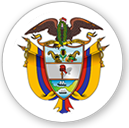





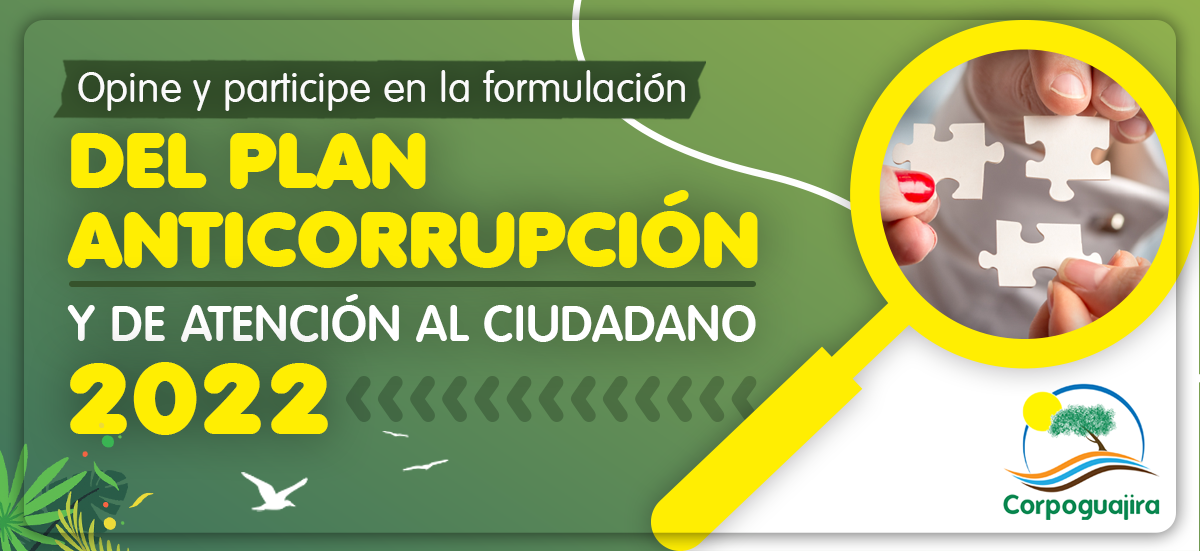
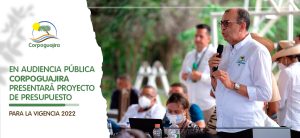







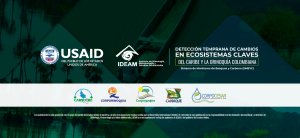










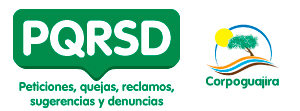
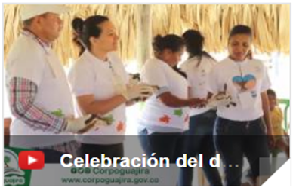


Leave a reply
I am sorry, you should be connected to post a comment.